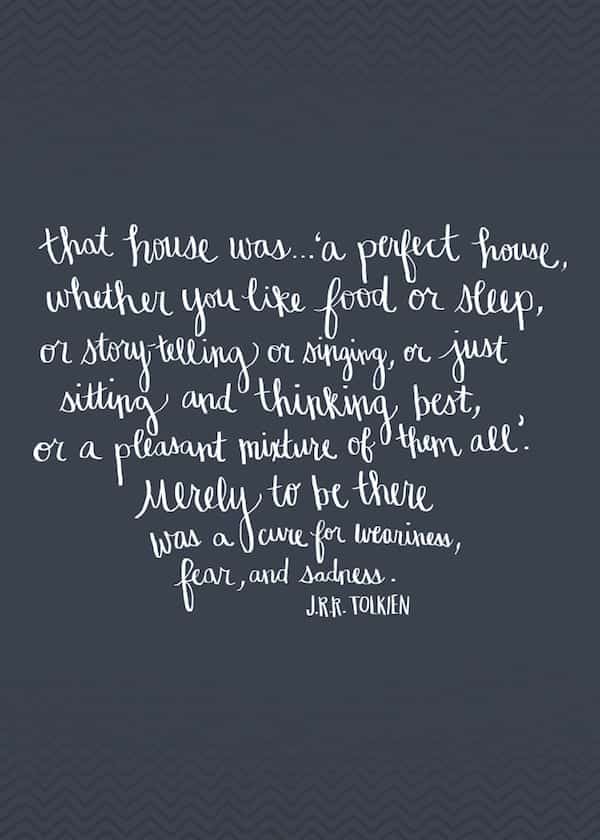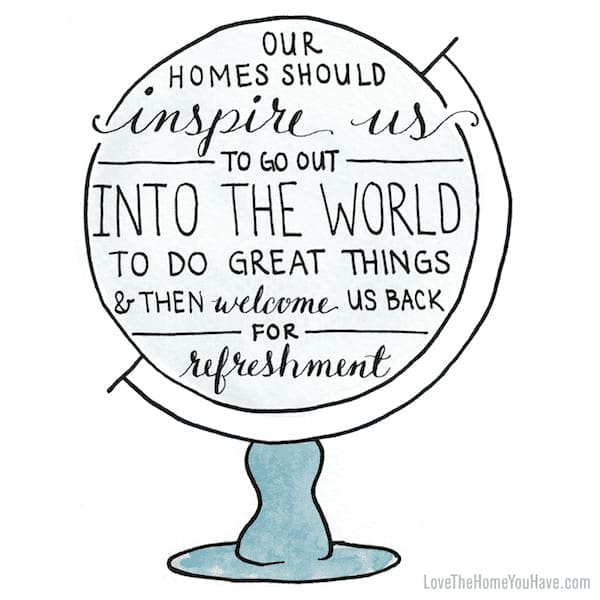“That house was…’a perfect house, whether you like food or sleep, or story-telling or singing, or just sitting and thinking best, or a pleasant mixture of them all. Merely to be there was a cure for weariness, fear, and sadness.” – J.R.R Tolkien
Doesn’t that quote from J.R.R Tolkien about a story-book home make you feel warm inside? It does for me. The word “home” evokes something in us all, and the desire to live in a house that feels like home is something we at Baker Design Group have formed a business around! We think it’s that important!
Nevertheless, we know that designing a home can feel overwhelming for most people, especially when it comes to creating a budget. Today, we’re sharing 4 thoughts on how to make creating a budget less stressful- which allows the process of working with an interior designer to be easy and enjoyable.
The credit for the sweet graphics posted throughout the blog are in the photos; I think it’s appropriate to include them in this post on budgeting because they keep us focused on the bigger picture. You are creating a plan for your home to be beautiful, welcoming, and whatever else you’re desiring it to be! The budget is very important, but when created appropriately based on what you have, it doesn’t have to take any enjoyment out of the experience.
It can be hard to look at your home and know what everything is going to cost up front. A budget can vary widely depending on the scope of the project. There are so many factors involved with everything from material goods, construction and permit costs, labor, delivery and installation fees and so on.
It is extremely important to set a realistic budget from the beginning of your project. It sets everyone up for a much more efficient design process and will create fewer headaches in the long run.
The following list will provide some insight into how to manage your budget and expectations:
1. CREATE YOUR IDEAL WISH LIST (Before Contacting a Designer)
Before even considering your budget, go through your home and write down what you want to change or add. This list should include anything and everything you would want to address when designing your home. While additions during the design process do happen, this will help to cut down on seemingly “little additions” that can add up later on.
2. COME UP WITH AN AMOUNT YOU’RE COMFORTABLE INVESTING IN YOUR DESIGN (Before Your Design Consultation)
Occasionally clients will tell us that they don’t have a budget because they simply don’t know what anything costs.
Although you might not feel like you have a good grasp on what certain items cost, you do probably do know how much you’ve set aside or would feel comfortable spending. Revealing this number before or during an initial consultation will help designers determine what is feasible and where to allocate the budget.
Also, no matter how much you might plan, unexpected costs are not unheard of, especially during any major renovations. It’s always a good idea to leave a little bit of a cushion in your budget to cover these costs.
3. DETERMINE WANTS VS. NEEDS (After Your Initial Design Consultation)
It’s at this point that reality tends to set in. Often clients might find that it’s not possible to have everything on their wish list while staying within their budget. A “need” is anything that is required to make a room functional. Everything else is a “want”. However, “wants” are often an important aspect of making a room feel completed (i.e. window treatments, pillows, accessories). As designers, our goal is to find a balance between your wants, needs, and budget. We can help you to determine where your money will be best spent, all while providing a functional and aesthetically pleasing space.
4. CONSIDER PHASING IT IN (Before Starting the Design Plan)
Clients may feel torn between their wish list and their budget. At this point, some people might feel like it would be best to wait and save more money so they can do everything they want. Sometimes though, we choose to design in phases.
Think about how your family functions and determine which rooms would be a priority. For example, would it be best to focusing on public spaces, such as the entry, family room or kitchen? Or should you start off by doing all of the bedrooms, where so much of your time is spent? This approach can enable clients to make changes in their home without stretching their budgets too thin.
Every project is different and there’s no “one size fits all” when it comes to design budgets. Working closely with a designer can help you allocate your budget effectively and increase efficiency when designing your home. Once an ideal budget is set and priorities are agreed upon, then the design plan process can begin!




